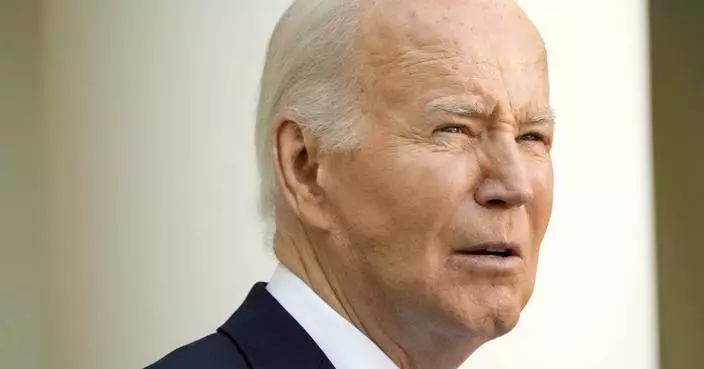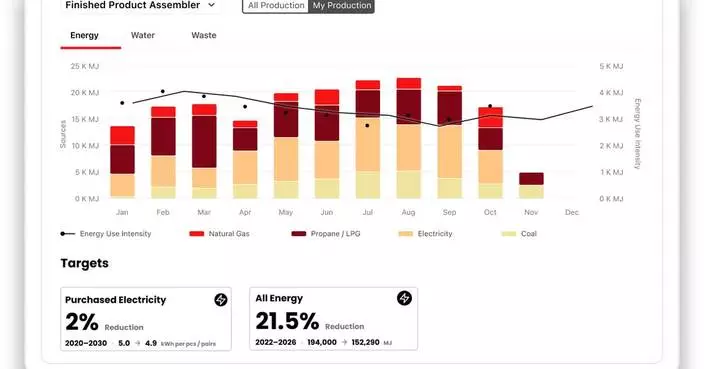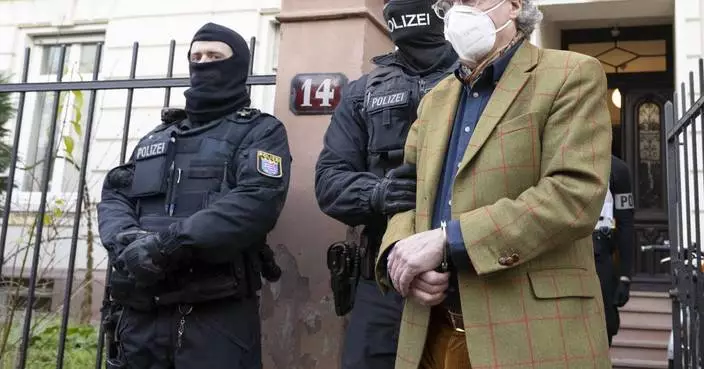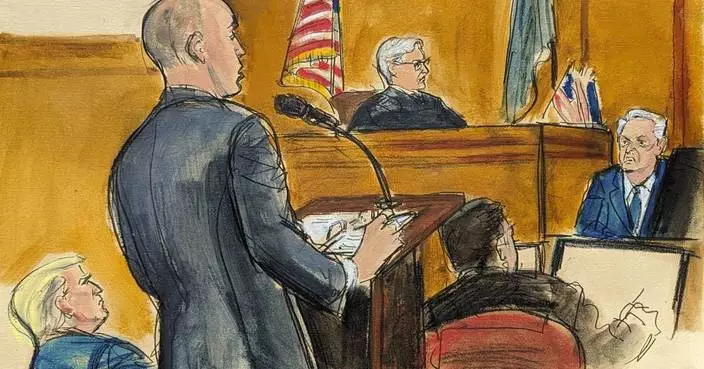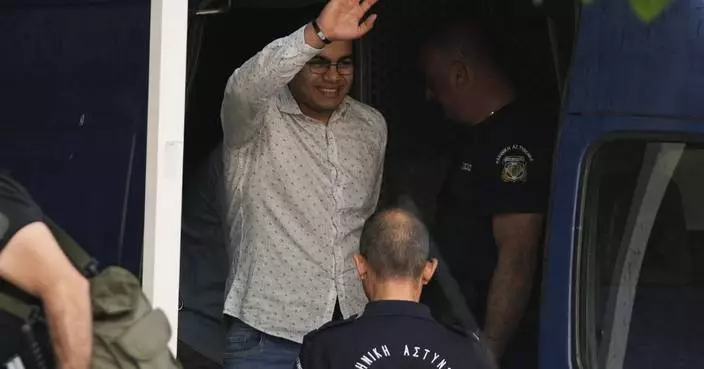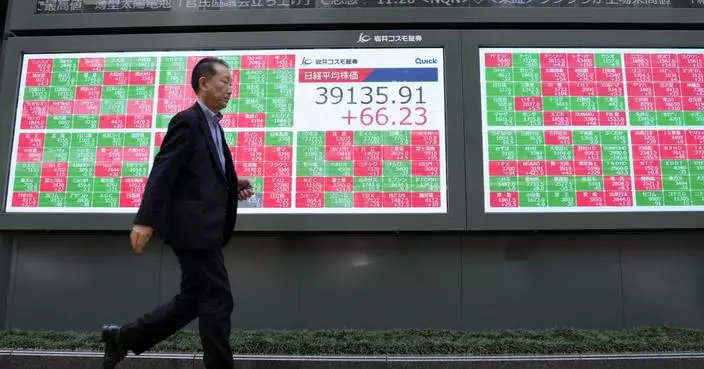BEIJING (AP) — The first scientist to publish a sequence of the COVID-19 virus in China said he was allowed back into his lab after he spent days locked outside, sitting in protest.
Zhang Yongzhen wrote in an online post on Wednesday, just past midnight, that the medical center that hosts his lab had “tentatively agreed” to allow him and his team to return and continue their research for the time being.
“Now, team members can enter and leave the laboratory freely,” Zhang wrote in a post on Weibo, a Chinese social media platform. He added that he is negotiating a plan to relocate the lab in a way that doesn’t disrupt his team’s work with the Shanghai Public Health Clinical Center, which hosts Zhang’s lab.
Zhang and his team were suddenly told they had to leave their lab for renovations on Thursday, setting off the dispute, he said in an earlier post that was later deleted. On Sunday, Zhang began a sit-in protest outside his lab after he found he was locked out, a sign of continuing pressure on Chinese scientists conducting research on the coronavirus.
Zhang sat outside on flattened cardboard in drizzling rain, and members of his team unfurled a banner that read “Resume normal scientific research work," pictures posted online show. News of the protest spread widely on Chinese social media, putting pressure on local authorities.
In an online statement Monday, the Shanghai Public Health Clinical Center said that Zhang’s lab was closed for “safety reasons” while being renovated. It added that it had provided Zhang’s team an alternative laboratory space.
But Zhang responded the same day his team wasn’t offered an alternative until after they were notified of their eviction, and the lab offered didn’t meet safety standards for conducting their research, leaving his team in limbo.
Zhang’s dispute with his host institution was the latest in a series of setbacks, demotions and ousters since the virologist published the sequence in January 2020 without state approval.
Beijing has sought to control information related to the virus since it first emerged. An Associated Press investigation found that the government froze domestic and international efforts to trace it from the first weeks of the outbreak. These days, labs are closed, collaborations shattered, foreign scientists forced out and some Chinese researchers barred from leaving the country.
Zhang’s ordeal started when he and his team decoded the virus on Jan. 5, 2020, and wrote an internal notice warning Chinese authorities of its potential to spread — but did not make the sequence public. The next day, Zhang’s lab was ordered to close temporarily by China’s top health official, and Zhang came under pressure from the authorities.
Foreign scientists soon learned that Zhang and other Chinese scientists had deciphered the virus and called on China to release the sequence. Zhang published it on Jan. 11, 2020, despite a lack of permission from Chinese health officials.
Sequencing a virus is key to the development of test kits, disease control measures and vaccinations. The virus eventually spread to every corner of the world, triggering a pandemic that disrupted lives and commerce, prompted widespread lockdowns and killed millions of people.
Zhang was awarded prizes overseas in recognition for his work. But health officials removed him from a post at the Chinese Center for Disease Control and Prevention and barred him from collaborating with some of his former partners, hindering his research.
Still, Zhang retains support from some in the government. Though some of Zhang’s online posts were deleted, his sit-in protest was reported widely in China’s state-controlled media, indicating divisions within the Chinese government on how to deal with Zhang and his team.
“Thank you to my online followers and people from all walks of life for your concern and strong support over the past few days!” Zhang wrote in his post Wednesday.

Buildings in the Shanghai Public Health Clinical Center stand near the entrance of the compound in Shanghai, China, Tuesday, April 30, 2024. Zhang Yongzhen, the first scientist to publish a sequence of the COVID-19 virus, staged a sit-in protest after authorities locked him out of his lab at the center. (AP Photo/Dake Kang)
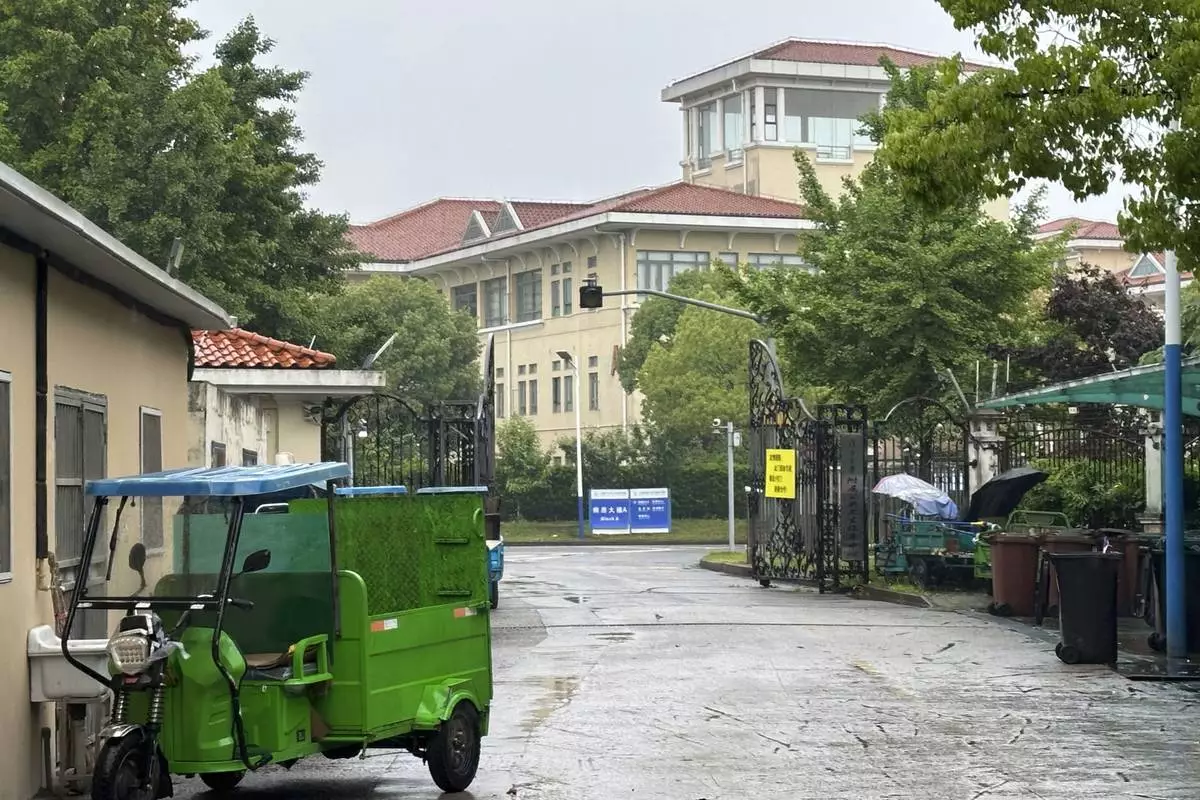
Buildings in the Shanghai Public Health Clinical Center stand near the entrance of the compound in Shanghai, China Tuesday, April 30, 2024. Zhang Yongzhen, the first scientist to publish a sequence of the COVID-19 virus, staged a sit-in protest after authorities locked him out of his lab at the center. (AP Photo/Dake Kang)
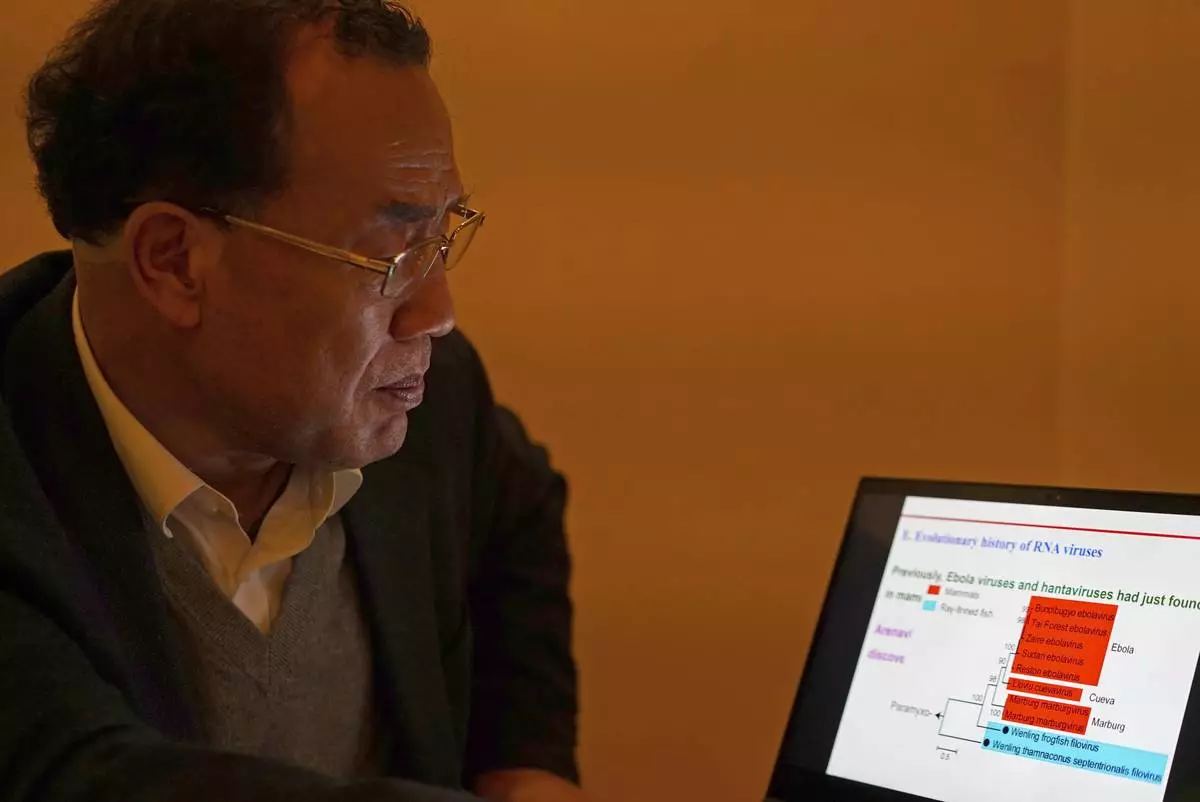
Zhang Yongzhen, the first scientist to publish a sequence of the COVID-19 virus, looks at a presentation on his laptop in a coffeeshop in Shanghai, China on Dec. 13, 2020. Zhang was staging a sit-in protest after authorities locked him out of his lab. Zhang wrote in an online post on Monday, April 29, 2024, that he and his team were suddenly notified they were being evicted from their lab, the latest in a series of setbacks, demotions and ousters since he first published the sequence in early January 2020.(AP Photo/Dake Kang)
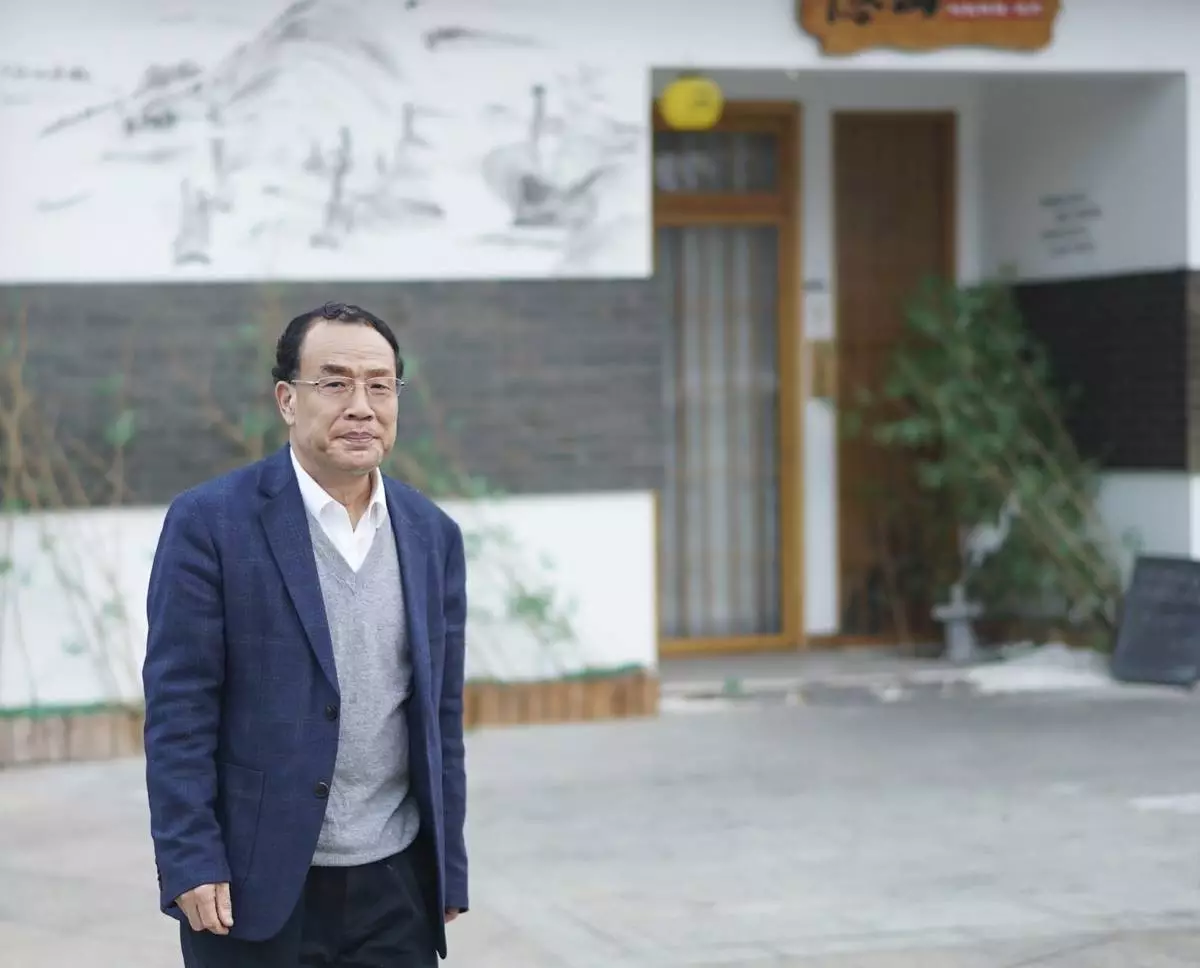
Virologist Zhang Yongzhen, the first scientist to publish a sequence of the COVID-19 virus, walks down a street in Shanghai, China on Dec. 13, 2020. Zhang was staging a sit-in protest after authorities locked him out of his lab. Zhang wrote in an online post on Monday, April 29, 2024, that he and his team were suddenly notified they were being evicted from their lab, the latest in a series of setbacks, demotions and ousters since he first published the sequence in early January 2020.(AP Photo/Dake Kang)
DUBAI, United Arab Emirates (AP) — Mourners in black began gathering Tuesday for days of funerals and processions for Iran's late president, foreign minister and others killed in a helicopter crash, a government-led series of ceremonies aimed at both honoring the dead and projecting strength in an unsettled Middle East.
For Iran's Shiite theocracy, mass demonstrations have been crucial since millions thronged the streets of Tehran to welcome Grand Ayatollah Ruhollah Khomeini in 1979 during the Islamic Revolution, and also attended his funeral 10 years later. An estimated 1 million turned out in 2020 for processions for the late Revolutionary Guard Gen. Qassem Soleimani, who was slain in a U.S. drone strike in Baghdad.
Whether President Ebrahim Raisi, Foreign Minister Hossein Amirabdollahian and others draw the same crowd remains in question, particularly as Raisi died in a helicopter crash, won his office in the lowest-turnout presidential election in the country's history and presided over sweeping crackdowns on all dissent. Prosecutors already have warned people over showing any public signs of celebrating his death and a heavy security force presence has been seen on the streets of Tehran since the crash.
But Raisi, 63, had been discussed as a possible successor for Iran's supreme leader, the 85-year-old Ayatollah Ali Khamenei. His death now throws that selection into question, particularly as there is no heir-apparent cleric for the presidency ahead of planned June 28 elections.
“Raisi’s death comes at a moment when the Islamist regime is consolidated,” wrote Alex Vatanka, an Iran expert at the Middle East Institute. “In short, there will be no power vacuum in Tehran; nonetheless, post-Khamenei Iran suddenly looks far less predictable than it did just a few days ago.”
A procession Tuesday morning led by a semitruck carrying the caskets of the dead slowly moved through the narrow streets of downtown Tabriz, the closest major city near the site of the crash Sunday. Thousands in black slowly walked beside the coffins, some throwing flowers up to them as an emcee wept through a loudspeaker for men he described as martyrs.
The bodies will travel on to the holy Shiite seminary city of Qom before traveling to Tehran later Tuesday. On Wednesday, a funeral presided over by Khamenei will then turn into a procession as well.
It remains unclear what international presence that funeral will draw, as Raisi faced U.S. sanctions for his part in mass executions in 1988 and for abuses targeting protesters and dissidents while leading the country's judiciary. Iran under Raisi also shipped bomb-carrying drones to Russia to be used in its war on Ukraine.
“I don’t feel comfortable sending condolences while Iran is sending drones that are used against civilians in Ukraine,” wrote Lithuanian Foreign Minister Gabrielius Landsbergis on the social platform X.
On Thursday, Raisi's hometown of Birjand will see a procession, followed by a funeral and burial at the Imam Reza shrine in the holy city of Mashhad, the only imam of the Shiite's faith buried in Iran.
That shrine has long been a center for pilgrims and sees millions visit each year. Over the centuries, its grounds have served as the final burial site for heroes in Persian history. It's an incredibly high, rare honor in the faith. Iranian President Mohammad-Ali Rajai, the only other president to die in office when he was killed in a 1981 bombing, was buried in Tehran.
Iran's theocracy declared five days of mourning, encouraging people to attend the public mourning sessions. Typically, government employees and schoolchildren attend such events en masse, while others take part out of patriotism, curiosity or to witness historic events.
Across Iran, its rural population often more closely embraces the Shiite faith and the government. However, Tehran has long held a far different view of Raisi and his government's policies as mass protests have roiled the capital for years.
The most recent involved the 2022 death of Mahsa Amini, a woman detained over her allegedly loose headscarf, or hijab. The monthslong security crackdown that followed the demonstrations killed more than 500 people and saw over 22,000 detained. In March, a United Nations investigative panel found that Iran was responsible for the “physical violence” that led to Amini’s death. Meanwhile, Iran's rial currency has cratered after the collapse of Iran's nuclear deal with world powers, destroying people's savings and pensions.
On Sunday night, as news of the helicopter crash circulated, some offered anti-government chants in the night. Fireworks could be seen in some parts of the capital, though Sunday also marked a remembrance for Imam Reza, which can see them set off as well. Critical messages and dark jokes over the crash also circulated online.
Iran's top prosecutor has already issued an order demanding cases be filed against those “publishing false content, lies and insults” against Raisi and others killed in the crash, according to the semiofficial ISNA news agency.
No cause has yet been offered by Iran's government for the crash, which took place in a foggy mountain range in a decadesold helicopter. Iranian presidents including hard-liner Mahmoud Ahmadinejad and Abolhasan Banisadr both survived their own helicopter crashes while in office.
Iran's military, not its civil aviation authority, will investigate and later offer a report, authorities say. Iran's civil air crash investigators faced widespread international criticism over their reports on the downing of a Ukrainian passenger plane by an air defense battery in 2020 after Soleimani's killing.
Meanwhile Tuesday, Iran’s new Assembly of Experts opened its first session after an election that decided the new assembly, a panel of which both Raisi and the late Tabriz Friday leader Mohammad Ali Ale-Heshem were members. A flower-ringed portrait sat on the seat Raisi would have occupied at the meeting of the 88-member panel, which is tasked with selecting the country's next supreme leader. Also attending was Iran's acting President Mohammad Mokhber.
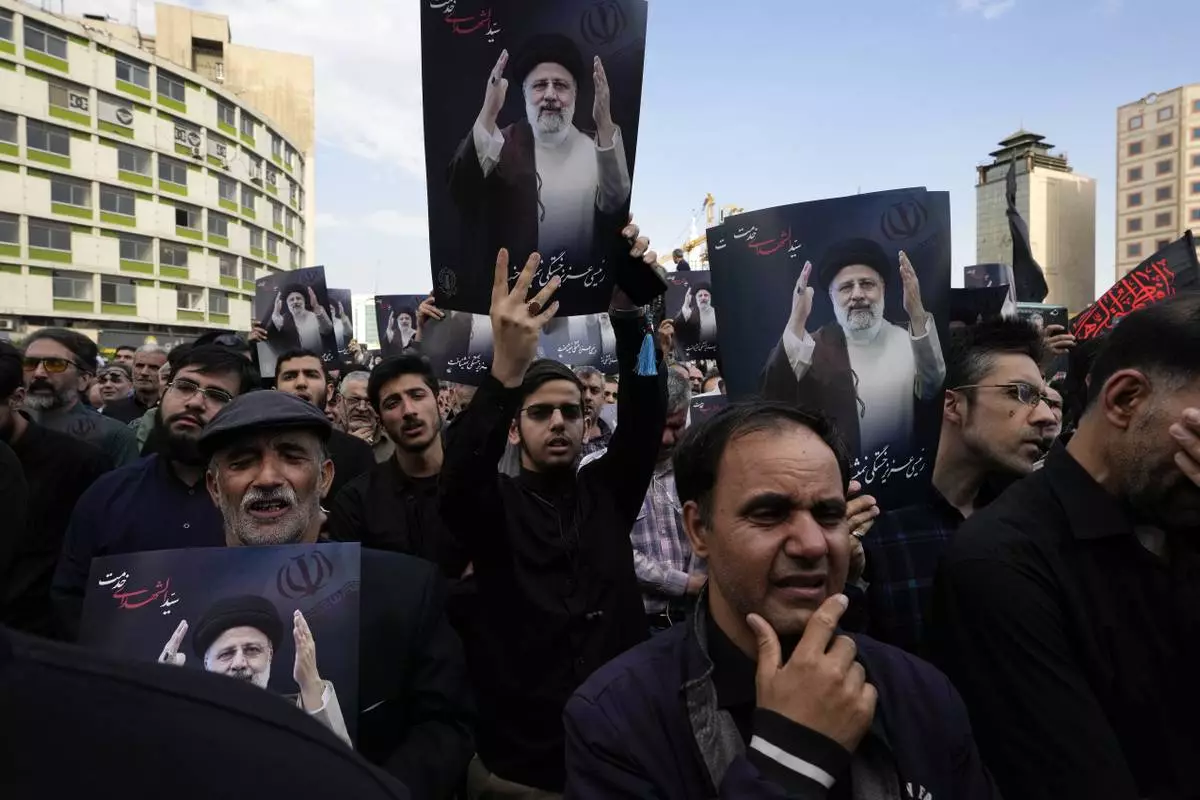
People hold up posters of Iranian President Ebrahim Raisi during a mourning ceremony for him at Vali-e-Asr square in downtown Tehran, Iran, Monday, May 20, 2024. President Raisi and the country's foreign minister were found dead Monday hours after their helicopter crashed in fog, leaving the Islamic Republic without two key leaders as extraordinary tensions grip the wider Middle East. (AP Photo/Vahid Salemi)
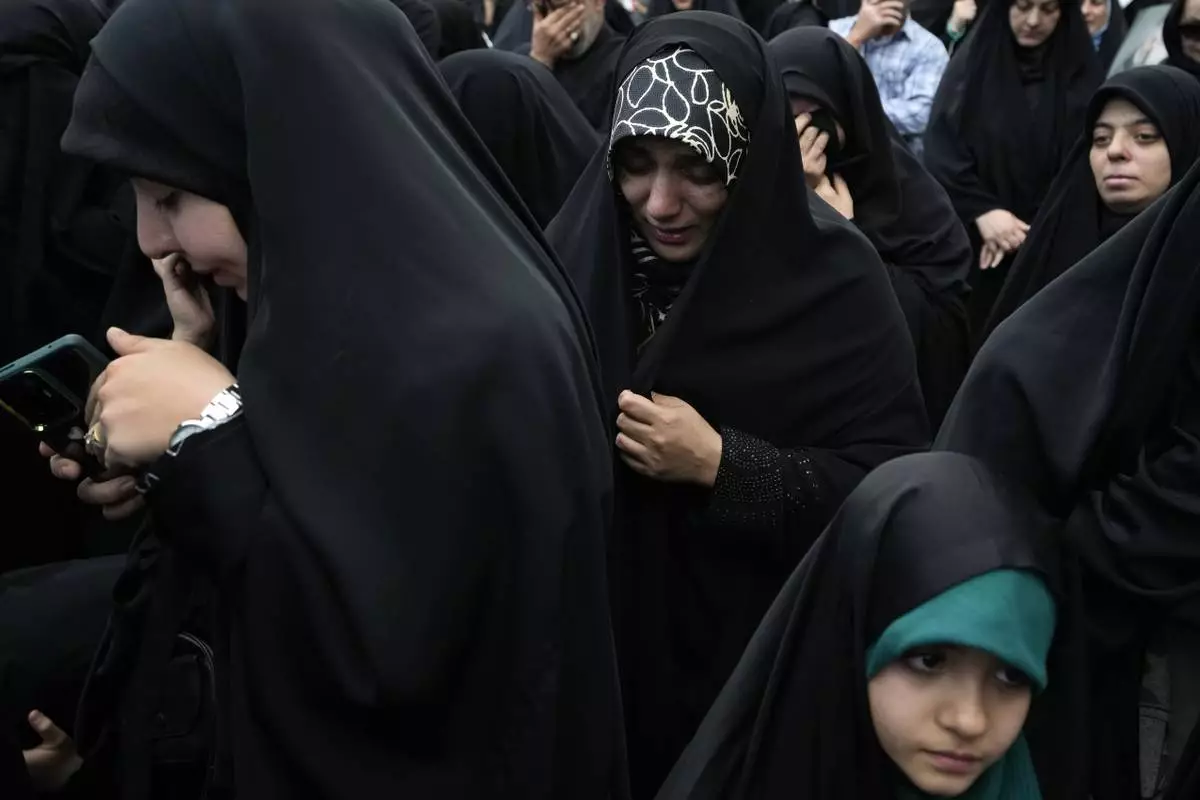
Women attend a mourning ceremony for Iranian President Ebrahim Raisi at Vali-e-Asr square in downtown Tehran, Iran, Monday, May 20, 2024. President Raisi and the country's foreign minister were found dead Monday hours after their helicopter crashed in fog, leaving the Islamic Republic without two key leaders as extraordinary tensions grip the wider Middle East. (AP Photo/Vahid Salemi)
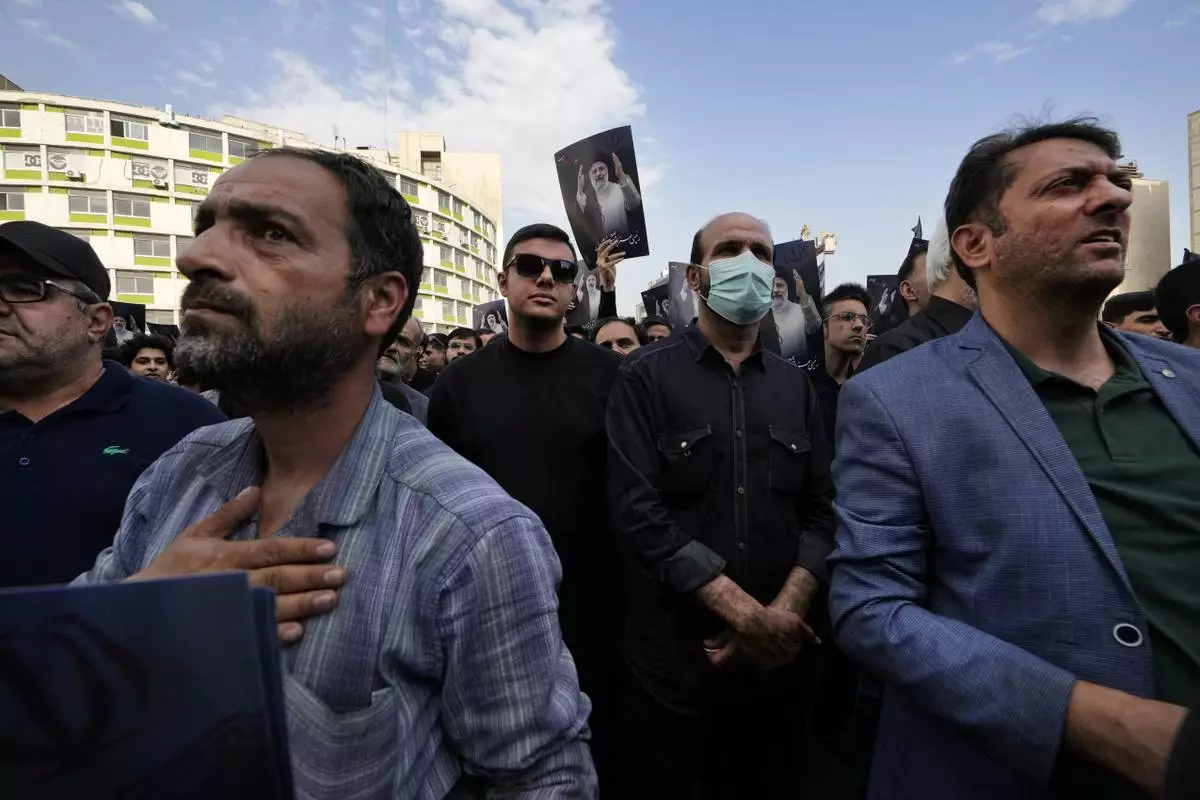
People attend a mourning ceremony for Iranian President Ebrahim Raisi, shown in the posters, at Vali-e-Asr square in downtown Tehran, Iran, Monday, May 20, 2024. President Raisi and the country's foreign minister were found dead Monday hours after their helicopter crashed in fog, leaving the Islamic Republic without two key leaders as extraordinary tensions grip the wider Middle East. (AP Photo/Vahid Salemi)

People hold up posters of Iranian President Ebrahim Raisi during a mourning ceremony for him at Vali-e-Asr square in downtown Tehran, Iran, Monday, May 20, 2024. President Raisi and the country's foreign minister were found dead Monday hours after their helicopter crashed in fog, leaving the Islamic Republic without two key leaders as extraordinary tensions grip the wider Middle East. (AP Photo/Vahid Salemi)












